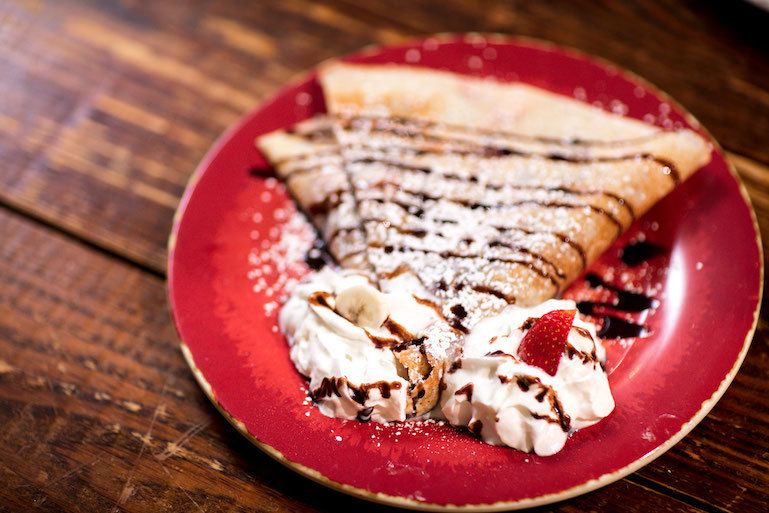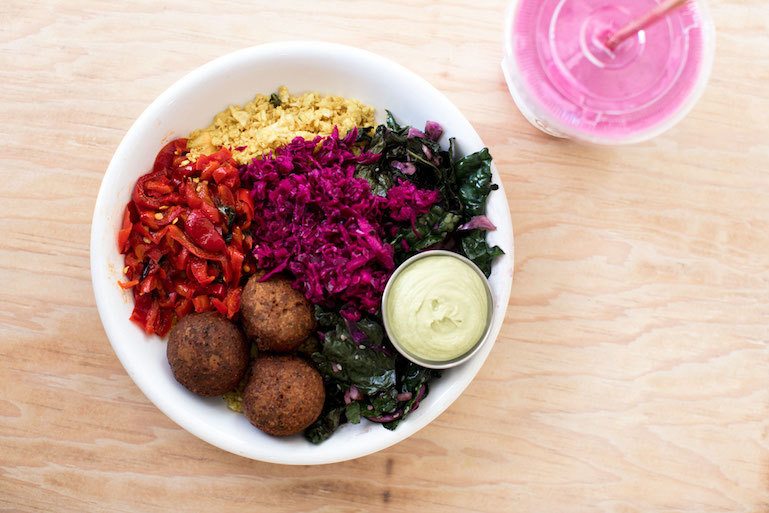
What is a Pop-Up Restaurant and Is it Right for My Business?
Pop-up restaurants are a fun, trendy, and affordable way to test a new restaurant concept or promote your existing restaurant to a new market of customers.
However, getting one off the ground can be a little confusing, even for experienced restaurant owners. After all, they better resemble an experiential marketing event than the long-term and sustainable business that most entrepreneurs strive to create.
With that in mind, this article will help you answer the questions, “What is a pop-up restaurant and is it right for my business?” We’ll also share some quick tips to get you started if you’re ready to pull the trigger.
What Is a Pop-Up Restaurant?
In a general sense, pop-up restaurants are typically short-lived simple eateries that appear in novel places, serve trendy food to visitors, and then vanish as quickly as they appeared. Originally a popular trend in the 1960s, they died out for a while but have been making a strong comeback.
Pop-up restaurants can come and go overnight, or they may set up shop and serve invitation-only guests for weeks at a time. Today, many up-and-coming entrepreneurs are using the concept to dip their toes in the restaurant business. Similarly, experienced restaurateurs use them to test out risky new concepts in a fun, lighthearted atmosphere without the financial obligations inherent in opening up a permanent location.
If that sounds like your speed, here are a few things to keep in mind for your own pop-up restaurant.
Pop-Up Restaurants Are Perfect for Beginners
There probably isn’t a better way to get into the restaurant business for yourself than with a pop-up restaurant. Most future world-famous chefs are nervous about starting their own place, and pop-ups are great, low-commitment ventures that can get you massive experience and skip the hundreds of thousands of dollars in start-up capital.
You don’t even have to fax your resignation to the CEO of the accounting firm you’re working for now—just rent or buy some equipment, find a venue that won’t call the cops when they find out you’re there, and spread the word about when you’ll be open. You can play at being a head chef from Friday night to Sunday afternoon, and be back in the cubicle by Monday morning, if that’s what you’re comfortable with.
SEE ALSO: Your Guide to Finding the Right Restaurant Suppliers
Try Out New Concepts Like a Boss
Another big plus of dipping your toes in the pool with a pop-up restaurant is that you can try out new concepts and dishes. Not every restaurant idea is a guaranteed winner, but your idea for a desserts-only eatery or an all-broccoli menu might turn out to be really popular if the public gets a look at it. Trying out your restaurant theme in a pop-up restaurant first can be a good way to test a new concept before you commit to it.
Entice Investors
Assuming the idea you have is a good one, you might be looking down the road to a fixed establishment someday. That requires start-up capital or outside investment of some kind, either from a bank loan or private investors, to get set up. No matter which type of funding you’re after, there’s no better way to get the money than to show investors receipts from the pop-up restaurant you were using as a test platform.
Build Up a Buzz About Your Style
Even as your potential investors are noticing your pop-up restaurant, so is the public at large. Eating at a pop-up just feels fun for a lot of people, and serving your patented prime rib to happy, laughing people from your station in an abandoned airplane hangar is a blast that wins you long-term customers. Is there a better date idea than steak and eggs in an after-hours speakeasy you’re running in a closed-up deli? Introducing yourself to the public this way builds a buzz about your brand that can pay off big when you hang out your shingle in a fixed location later on.

How Can a Pop-Up Restaurant Help Merchants Who Already Own a Restaurant?
Speaking of that closed deli, a lot of pop-up restaurants operate out of existing establishments that are leasing the space. The classic example would be of a breakfast bar that closes up after lunch, but then reopens after 9 p.m. as a pop-up restaurant run by somebody else. If you’re the established business owner, letting an ambitious restaurateur take over after dark (or before you open for the lunch and dinner crowd) can work out really well for you.
Pop-Up Restaurants Can Make Use of Your Facility During Downtime
Your restaurant isn’t making any money while it’s closed, and you might not be willing to stay open 24 hours to catch the half-dozen night owls who need blueberry pancakes at 2 a.m. If you’re leasing to a pop-up enterprise, however, your place is making money while you relax on the couch.
The exact terms are always negotiable, but in general, the site owner lets out the facility to the pop-up in exchange for a share of the proceeds, which should be enough to cover the electricity, water, and other bills that are bound to go up. If you play your cards right, pop-up restaurants operating in your kitchen can help pay for a nice chunk of your monthly expenses, and possibly even net you a profit.
Experiment With New Menu Choices
Partnering with a pop-up restaurant can also work out well for you if you’re paying attention to the results. Say you’re a breakfast and lunch joint that serves a mean Reuben sandwich for lunch, but you close at 3 p.m. If you’ve been thinking about extending your hours and offering Italian cuisine for dinner, letting your place out to a casual Italian pop-up feeds you valuable information about how well an Italian restaurant can do in your location. Your experience with the pop-up can tell you more in a week than years of theory.
Attract New Public
Pop-up restaurants can help you grow and expand in another way: by attracting a new demographic to your existing restaurant. Say you did wind up opening that dinner-only Italian restaurant. Would you be doing better as an intimate “violins with gourmet food and drinks” date location where people sniff corks and so on? Or should you aim for cheese pizza and all-you-can-eat spaghetti platters for the kids?
Trying both on for size is much easier when you’re doing it in a pop-up restaurant that you can switch around or move at will, as opposed to gambling on a wholesale commitment that might not pan out. You might even discover that one group of tired, haggard parents is happy to get that spaghetti platter from 5 to 8 p.m., but that young couples prefer the violin thing after 9. In either case, the pop-up taught you what you needed to know, and it drew the crowds you needed in a hurry.
SEE ALSO: How to Attract More Restaurant Customers on the Cheap
Run Fundraisers for Causes
Everybody does charity in their own way, and people who know restaurants can use the pop-up concept to raise money, support causes, and generally make the world a better place. In a sense, every catering job is a super short-term pop-up restaurant, though yours will probably last longer than an afternoon and serve something more demanding than hot links on a park grill.
By setting up with your more portable gear in a public place, or on private property if you have permission, you’ve already got half of what you need to run a successful fundraiser for your kids’ baseball team, their school, or the local community center. You can even use the pop-up restaurant idea to help feed first responders and people who are in need after a natural disaster or other crisis. Free cold sandwiches from the snack truck are nice at first, but nothing makes wilderness firefighters happier than a sit-down meal in a real (albeit temporary) restaurant with plates and everything.
What Are Some Quick Tips for Opening a Pop-Up Restaurant?
If you’ve gotten this far, and you can’t wait to get rolling on a pop-up restaurant of your own: wait a minute. While there’s no definitive “right” kind of pop-up, there are a lot of ways to do it wrong. Some tips might help you get off the ground with your idea:
Safety First
Fixed-establishment restaurants have a lot going for them, such as fire suppressors and regular health inspections. In a pop-up, you have to take that stuff, if anything, more seriously than an established business. Here are some tips for keeping yourself and your clients safe:
- If you’re operating out of a restaurant’s kitchen, make sure you know where everything is and how it works. Don’t run the pressure cooker, for instance, until you know how.
- If you’re outdoors, or if your pop-up restaurant is in a place that usually doesn’t serve food, like an automotive garage or the roof of an apartment tower, make sure you have portable warming pans to keep hot food hot, and lightweight coolers to do the opposite with fresh veggies and uncooked meat.
- Always get permission from a property owner before you start up. As outlaw-cool as it is to run an underground restaurant, nothing beats having the go-ahead from the landlord who might otherwise call the police on you.
Get Legal and Stay Legal
In the vein of getting permission and staying safe, you definitely want to check your local laws before running with your pop-up restaurant. Most places are very unfriendly towards unlicensed food vendors. Even if you’re in a place that allows temporary, inspection-free pop-up restaurants to operate, it’s still a good idea to make sure you’re free and clear. Some areas, for instance, will allow you to serve wine and beer on a temporary basis with a special permit. Others come down hard on that. Make sure you fully understand the legislation governing the locality where you’ll be operating before pouring the first glass.
Offer limited menu choices
It’s true that a casual pop-up restaurant can be the best place to experiment with new ideas, but try to keep it down to one or two, at least at first. Even if you’re operating out of an established restaurant site where you know the kitchen inside and out, the essence of a pop-up restaurant is that it’s temporary and casual. To that end, try to offer a fixed menu or one with just two or three meal options, so you’re not sent running from pillar to post with unique orders. Remember, you’re probably operating with minimal or zero staff to help out.
Use Social Media to Promote Your Pop-up Restaurant
Social media is ideal for publicizing your pop-up restaurant. In fact, the fast-paced, ultimately casual nature of both pop-up restaurants and your Twitter feed seem made for each other. Gather a crowd online a few weeks before you start operations, and keep everybody hooked with regular updates with photos. Raising hype for your venture on social media doesn’t cost anything except a little time, and unlike a paid ad campaign, you can just stop when you’re done.
SEE ALSO: 5 Social Media Tips for Small Business Success
Choose the Right Point of Sale (POS) System
Opening a pop-up restaurant can be fun, profitable, and productive for you, whether you’re new to the game or you’ve been at it for decades. One thing you need for sure is a high-quality restaurant point of sale system to handle all the money the public can’t wait to give you. ShopKeep is a tablet point of sale system that’s perfect for casual, temporary eateries running out of mobile or semi-permanent locations.
All you need is the right hardware and an internet connection or mobile hotspot and you can get up and running. Plus, the software makes accepting payments even easier than it is from a legacy POS or cash register like you’ll typically find in a more traditional fixed establishment. Even if you and your team are new to the world of restaurants and POS, you’ll have no trouble figuring it out.
Whether you’re an experienced restaurateur or first-time entrepreneur, pop-up restaurants have their value. The trick is in understanding your goals and executing your venture with those in mind. While pop-ups are a lower cost and lower risk way to play in the restaurant industry, they aren’t free-of-charge or without risks. But if you keep your objective in mind and are prepared to adapt along the way, you’ll find that success isn’t as hard to find as you might think.
Want to try ShopKeep for yourself?
Just answer a few easy questions.
Need help finding the right point of sale?
Just complete the form. We’ll call you right back to explain how ShopKeep can work for you.
Hit the ground running.Sprinting, in fact!
Read our free, comprehensive guide, Small Business 101, to learn all you need to know about starting a thriving business.

